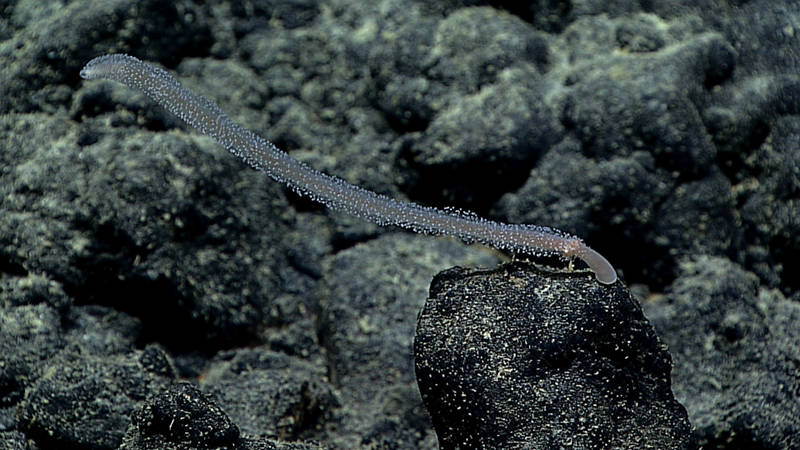Today we celebrated the one-year anniversary of the Pacific Remote Islands Marine National Monument with the deepest dive ever conducted in the monument. Dive 12 explored a ridge feature west of Karin Ridge, starting from a depth of 4,241 meters. After only about 10 minutes on the seafloor, our science team was stumped by a very unusual hydroid species. As ROV Deep Discoverer (D2) continued up slope, we documented several different species of sponges and sea cucumbers, a few brittle stars, a brisingid sea star, squat lobsters, crinoids, barnacles, ribbon worms, and two pregnant crustaceans (a possum shrimp and a large isopod). We also encountered several fish including cutthroat eels and cusk eels. Sponges were by far the most abundant organism observed during the dive.
